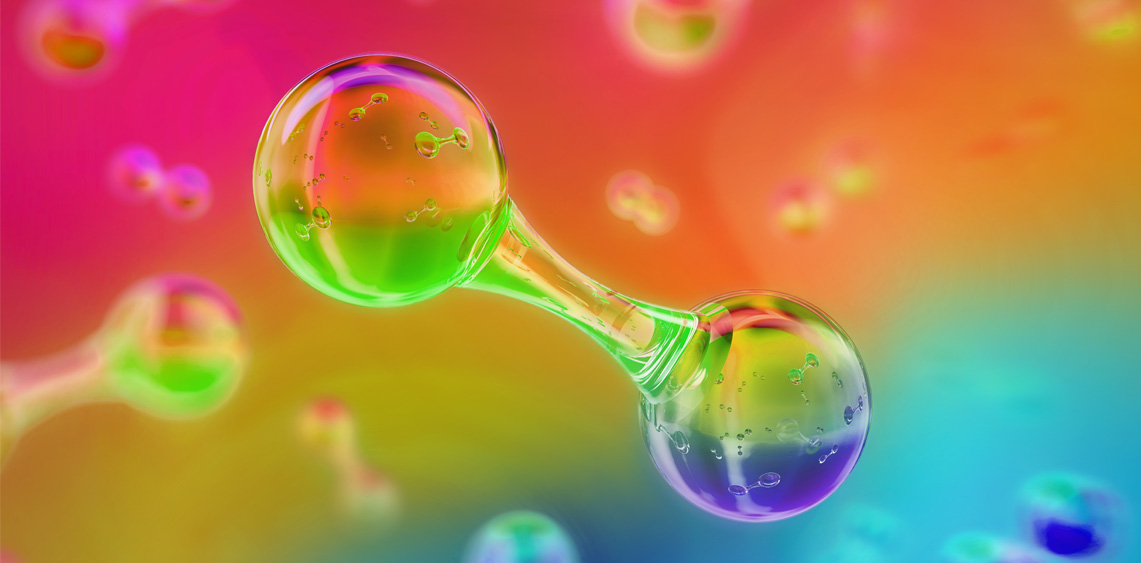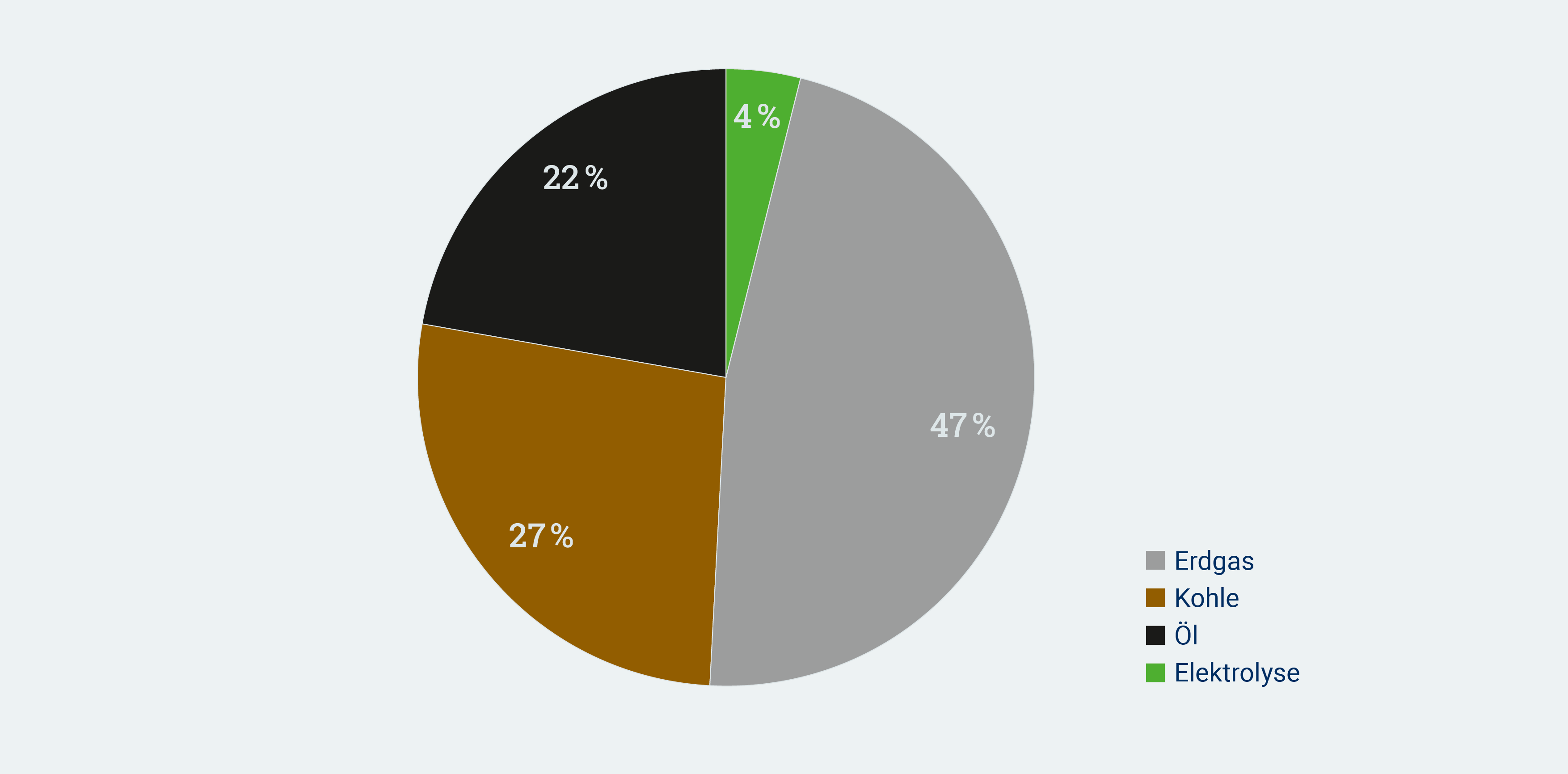The Colours of Hydrogen, Part 1: Grey

The range of hydrogen colours is diverse. Image: Forschungszentrum Jülich/Reisen
How many colours of hydrogen do you know about? First of all, hydrogen does not actually have a colour. It is invisible. Whenever we speak about green, grey, or blue hydrogen, we do so to distinguish between the different methods of hydrogen production. Or we use a colour to indicate whether or not the hydrogen was produced in a carbon-neutral manner. The real question, therefore, is how many ways of producing hydrogen are you aware of? But let’s stick with the colours here.
No definitive answer
There is no definitive answer to the number of hydrogen colours there are. This is partly due to the fact that grey hydrogen, for example, is further distinguished in terms of the original energy carrier. Hydrogen that is produced through lignite gasification is referred to as brown hydrogen; hydrogen that is generated through hard coal gasification is called black hydrogen. There is also a definition of grey hydrogen in a stricter sense, namely when it is produced from fossil methane. In our “Colours of Hydrogen” series, we attempt to explain the different colours of hydrogen. This is by no means intended as an exhaustive analysis.
Part 1: Grey hydrogen
To begin with, we will shed light on the type of hydrogen that accounts for by far the largest proportion of hydrogen in Germany: grey hydrogen. Grey hydrogen is an all-encompassing term referring to the associated release of emissions that are damaging to the climate, something which a more environmentally friendly energy economy of the future would look to avoid. The reality at present is that 96 % of globally produced hydrogen is grey in the more literal sense, as it involves the release of greenhouse gases. This is not a good carbon footprint.
“Grey hydrogen is exactly what we’re looking to move away from,” says Andreas Peschel, professor at Forschungszentrum Jülich’s Institute for a Sustainable Hydrogen Economy (INW). “The overarching aim should clearly be to produce and consume hydrogen in a way that causes no (or hardly any) emissions that are damaging to the climate throughout its entire value chain.” This evidently means that we need to significantly increase global production capacity for sustainably produced hydrogen to ensure that grey hydrogen can be displaced from the market, Peschel adds.

Part 1: Grey hydrogen
Until that point is reached, however, grey hydrogen is an acceptable bridging technology, according to Peschel. Compared to fossil fuels such as coal and oil, the carbon footprint of grey hydrogen is better. Just like coal and oil, the reaction products involved in the production of hydrogen are harmful to the environment. In the case of grey hydrogen, however, no greenhouse gases are released when using stored energy. This is in direct contrast to fossil fuels.
From a fuel cell perspective, hydrogen is simply hydrogen – regardless of the colour that has been ascribed to it. The fuel cell produces water and energy from hydrogen, with no negative impact on the climate.
“There is a second aspect that plays into grey hydrogen’s favour for the time being,” says Peschel, referring to the hydrogen infrastructure which needs to expand significantly. Germany currently requires around 47 terawatt hours (TWh) of energy, which is stored in hydrogen. This is the equivalent of roughly 12 million tonnes of hydrogen. The German National Hydrogen Council predicts a requirement of between 964 TWh and 1364 TWh for 2050.
The overarching aim should clearly be to produce and consume hydrogen in a way that causes no (or hardly any) emissions that are damaging to the climate throughout its entire value chain.
Prof. Andreas Peschel

Everything needs to expand – hydrogen production and the associated infrastructure for storage, transport, and consumption – and as quickly as possible given the current state of global warming. “We cannot afford to ramp up the production of green hydrogen first and only then expand the required infrastructure. We would lose too much time. It all needs to happen as the same time. It therefore makes sense to also use grey hydrogen within existing – and soon to be expanded – infrastructure. Grey hydrogen should be used until it is displaced by green hydrogen. As already mentioned, the carbon footprint of grey hydrogen is still much better than that of fossil fuels.”
Andreas Peschel also views blue hydrogen as another viable temporary solution. This type of hydrogen is produced in the same way as grey hydrogen, with the difference being its use of carbon capture and storage to prevent CO2 from being released into the atmosphere. We’ll look into blue hydrogen next time around.


